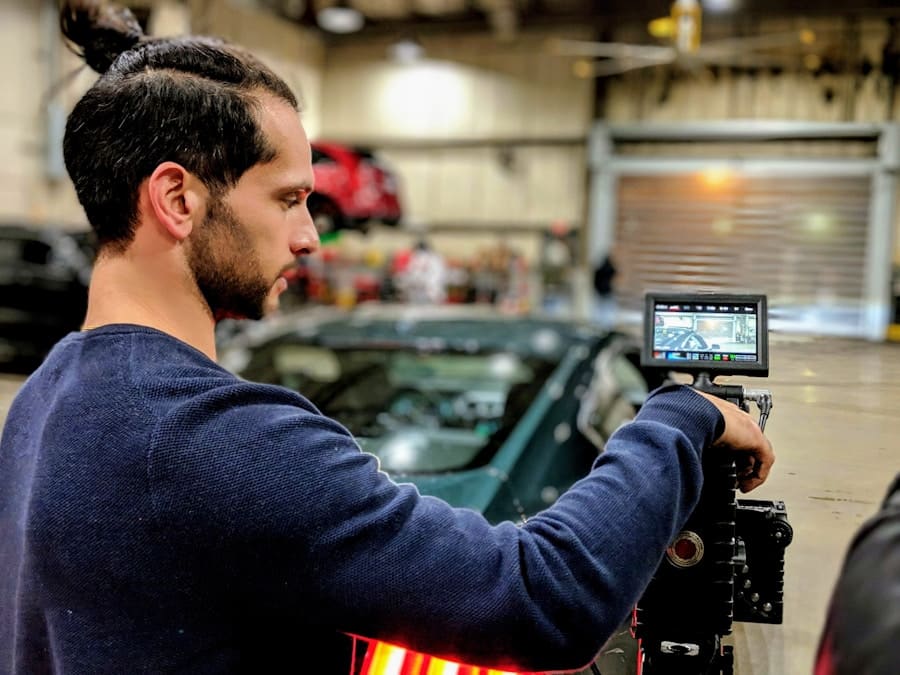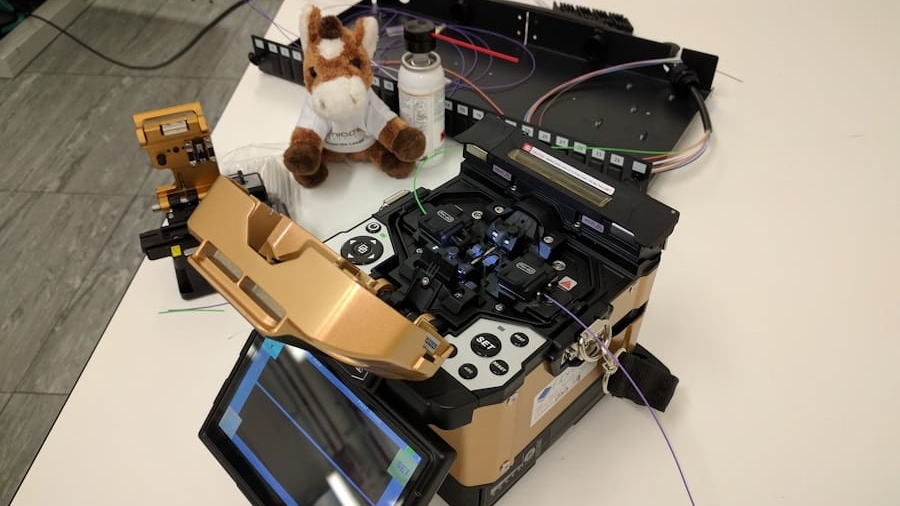Augmented Reality (AR) has emerged as a transformative technology, bridging the gap between the physical and digital worlds. By overlaying digital information onto the real environment, AR enhances the way users interact with their surroundings. In the context of equipment diagnostics, AR provides technicians and engineers with real-time data and visualizations that can significantly improve their ability to assess and maintain machinery.
This integration of AR into equipment diagnostics is not merely a technological advancement; it represents a paradigm shift in how industries approach maintenance, troubleshooting, and operational efficiency. The advent of AR in real-time equipment diagnostics is particularly relevant in sectors such as manufacturing, aerospace, and energy, where machinery plays a critical role in productivity. Traditional diagnostic methods often rely on manual inspections and static data analysis, which can be time-consuming and prone to human error.
In contrast, AR enables technicians to visualize complex data sets in an intuitive manner, allowing for quicker decision-making and more accurate assessments. As industries continue to embrace digital transformation, the role of AR in equipment diagnostics is poised to expand, offering new opportunities for innovation and efficiency.
Key Takeaways
- AR technology allows for real-time equipment diagnostics, providing instant information on the status of machinery and equipment.
- AR plays a crucial role in equipment maintenance and monitoring, allowing technicians to visualize and diagnose issues more effectively.
- Using AR for real-time equipment diagnostics offers advantages such as improved accuracy, reduced downtime, and enhanced safety for technicians.
- AR technology improves efficiency in equipment diagnostics by providing step-by-step guidance and remote assistance for technicians.
- Case studies have shown successful implementations of AR for equipment diagnostics, resulting in cost savings and improved productivity for businesses.
The Role of AR in Equipment Maintenance and Monitoring
AR technology serves as a powerful tool for equipment maintenance and monitoring by providing real-time insights into machinery performance. Through the use of smart glasses or mobile devices, technicians can access critical information such as operational metrics, maintenance schedules, and troubleshooting guides while remaining hands-free. This capability allows them to focus on the task at hand without the distraction of flipping through manuals or consulting separate screens.
For instance, a technician repairing a turbine can view schematics and diagnostic data overlaid directly onto the equipment, streamlining the repair process. Moreover, AR facilitates remote collaboration between on-site technicians and experts located elsewhere. By sharing a live video feed augmented with diagnostic overlays, remote specialists can guide technicians through complex repairs or maintenance tasks.
This not only enhances the quality of support but also reduces downtime by enabling faster resolution of issues. The ability to visualize data in context allows for a more comprehensive understanding of equipment health, leading to proactive maintenance strategies that can prevent costly failures.
Advantages of Using AR for Real-Time Equipment Diagnostics

The advantages of employing AR for real-time equipment diagnostics are manifold. One of the most significant benefits is the enhancement of accuracy in diagnosing issues. Traditional methods often rely on subjective interpretations of symptoms or historical data, which can lead to misdiagnoses.
AR mitigates this risk by providing technicians with precise, real-time data visualizations that highlight potential problems based on actual performance metrics. For example, an AR system might display temperature readings or vibration patterns directly on a machine’s surface, allowing technicians to identify anomalies quickly. Another key advantage is the reduction in training time for new employees.
With AR, novice technicians can learn on-the-job by following step-by-step visual instructions overlaid on the equipment they are working on. This immersive learning experience accelerates their understanding of complex systems and reduces the likelihood of errors during maintenance tasks. Companies that have implemented AR training programs have reported significant improvements in employee competency and confidence, ultimately leading to enhanced operational efficiency.
How AR Technology Improves Efficiency in Equipment Diagnostics
AR technology significantly improves efficiency in equipment diagnostics by streamlining workflows and reducing the time required for troubleshooting. When technicians can visualize diagnostic information in real-time, they can quickly pinpoint issues without extensive trial-and-error methods. For instance, an AR application might highlight specific components that require inspection based on sensor data, allowing technicians to focus their efforts where they are most needed.
This targeted approach not only saves time but also minimizes unnecessary wear on equipment caused by prolonged troubleshooting. Additionally, AR enhances communication among team members involved in equipment diagnostics. By using shared AR platforms, multiple technicians can collaborate on diagnosing an issue simultaneously, regardless of their physical location.
This collaborative environment fosters knowledge sharing and accelerates problem-solving processes. For example, if a technician encounters an unexpected issue during maintenance, they can instantly consult with a remote expert who can see the same augmented view of the equipment and provide guidance in real-time. This synergy between team members leads to faster resolutions and improved overall efficiency.
Case Studies: Successful Implementations of AR for Equipment Diagnostics
Several organizations have successfully implemented AR technology for equipment diagnostics, showcasing its potential across various industries. One notable example is Boeing, which has integrated AR into its aircraft assembly processes. Technicians use AR glasses to access 3D models and assembly instructions overlaid on the actual components they are working on.
This approach has resulted in significant reductions in assembly time and errors, demonstrating how AR can enhance precision in complex manufacturing environments. Another compelling case study comes from Siemens, which has utilized AR for maintenance in its gas turbine facilities. By equipping technicians with AR devices that display real-time performance data and maintenance procedures, Siemens has improved its diagnostic capabilities significantly.
Technicians can visualize critical information such as pressure levels and operational status directly on the turbine, enabling them to make informed decisions quickly. This implementation has not only increased efficiency but also contributed to higher levels of safety by reducing the need for technicians to access hazardous areas for inspections.
Challenges and Limitations of AR in Real-Time Equipment Diagnostics

Despite its numerous advantages, the adoption of AR technology for real-time equipment diagnostics is not without challenges. One significant limitation is the initial investment required for implementing AR systems. Organizations must consider the costs associated with hardware, software development, and training personnel to effectively use these tools.
For smaller companies or those operating on tight budgets, these upfront costs can be a barrier to entry. Furthermore, there are technical challenges related to integrating AR systems with existing equipment and software platforms. Many legacy systems may not be compatible with modern AR applications, necessitating additional investments in upgrades or custom solutions.
Additionally, ensuring data accuracy and reliability is crucial; if the information displayed through AR is incorrect or outdated, it could lead to misdiagnoses or unsafe operational practices. Addressing these challenges requires careful planning and collaboration between IT departments, engineers, and management.
Future Trends and Developments in AR for Equipment Diagnostics
The future of AR in real-time equipment diagnostics is promising, with several trends poised to shape its evolution. One emerging trend is the integration of artificial intelligence (AI) with AR systems. By leveraging AI algorithms to analyze vast amounts of data from sensors and historical performance records, organizations can enhance their diagnostic capabilities further.
AI can help identify patterns that may not be immediately apparent to human technicians, leading to more accurate predictions of equipment failures. Another trend is the increasing use of 5G technology to support AR applications in industrial settings.
This advancement will facilitate more complex applications such as remote assistance with high-definition video feeds and interactive simulations that allow technicians to practice repairs virtually before executing them on actual equipment.
The Impact of AR on Real-Time Equipment Diagnostics
The impact of augmented reality on real-time equipment diagnostics is profound and multifaceted. By enhancing accuracy, improving efficiency, and facilitating collaboration among technicians, AR technology is revolutionizing how industries approach maintenance and troubleshooting tasks. As organizations continue to explore innovative applications of AR, they will likely uncover new ways to optimize operations and reduce costs associated with equipment downtime.
As we look ahead, it is clear that the integration of AR into equipment diagnostics will only deepen as technology advances and becomes more accessible. The combination of AR with AI and 5G connectivity promises to unlock even greater potential for predictive maintenance strategies that can preemptively address issues before they escalate into costly failures. In this rapidly evolving landscape, companies that embrace these technologies will be well-positioned to lead their industries into a future characterized by enhanced operational efficiency and reliability.
If you are interested in exploring the latest technology trends, you may also want to check out this article on

